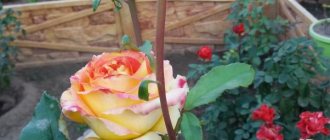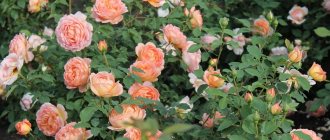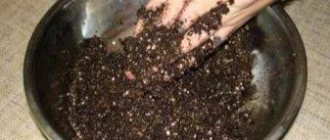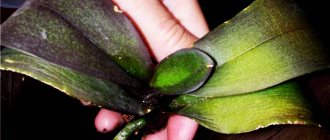Embodiment in bouquets
The history of the appearance of the bush rose began in China.
There, for the first time, they began to collect bouquets of these flowers and decorate homes and temples with them. In Greece, the rose was considered a sacred flower because the shape of its bud resembled a circle - a symbol of infinity. Subsequently, thanks to crossing, the number of types of roses became so large that flowers began to be divided into varieties. The bush rose can be considered the ancestor of modern hybrid roses, although it was originally a wild plant. It is interesting that the first attempts to grow roses in Russia date back to the middle of the 16th century, but flowers became widespread only in the 18th century, almost simultaneously with the growth of their popularity in Western Europe. The rulers of the empire greatly contributed to this: for example, Catherine II ordered the creation of the first rose garden in Russia in Tsarskoye Selo Park, it was called the pink field.
Thanks to the work of breeders, modern bush roses can be grown not only in gardens, but also at home. These plants are very popular among florists; the delicate small buds are well suited for creating bouquets and compositions, and cut flowers will last in a vase for at least a week.
Roses are heat-loving plants, but modern varieties are adapted to the climate of central Russia, thanks to which they tolerate both summer heat and winter frosts well.
It is important to remember that in the summer you can maintain a rose in the heat by providing it with timely watering and spraying the foliage so that it does not dry out. And in the fall, when the air temperature drops below -5 ° C, it is necessary to cover the bush
For shelter, you can use sand, spruce branches or special synthetic material. With such simple care, temperature changes will not be harmful to the plant.
The main rule of watering roses is to do it as needed. Immediately after watering, the soil should be moistened to a depth of about 25 cm and the procedure should not be repeated until it dries. Excess water in the root system can harm the plant, the roots will begin to rot and the flower will not be able to grow and produce buds. The most favorable time for watering is early morning or evening. In this case, the moisture will have time to reach the root system and will not evaporate too quickly. On average, one adult rose bush requires about 9 liters of water, and the next watering is carried out no earlier than a few days later.
Shrub roses love a lot of light. If you choose a sunny plot of land for them on the south side, they will certainly delight you with lush flowering all season long. But even if such a site is not found, they feel great in partial shade. Too dark corners of the garden are not suitable for such flowers and the plant may die.
Shrub roses are not very picky about soil and, with proper feeding, can thrive almost anywhere. Fertilizing the soil for roses can be divided into three stages: the first time the plant is fertilized in the spring at the beginning of the growing season, the second when the plant begins to form buds, and the third at the end of flowering. There are ready-made mixtures for feeding plants, which greatly simplifies the gardener’s work. But you can prepare the mixture yourself by purchasing all the elements separately at a gardening store. The main thing is not to forget to maintain the strength of the bush, and then it will delight and decorate the garden for many years.
Shrub roses bloom throughout the summer and decorate the garden with lush greenery and flowers of various shades. A distinctive feature of roses of the rose hip family is their ability to grow quickly, so when choosing a place for planting, you must take into account that the plant will grow several times.
To form a beautiful composition, it will be necessary to install supports and trim roses and faded buds.
You should also remove thick shoots at the base of the bush in time, otherwise they will take away the main strength and prevent new buds from forming. But it is better to leave the young branches, it is on them that fresh flowers will grow, and the longer they are, the more inflorescences there will be.
https://youtube.com/watch?v=GG0y_UsW7U4
Site selection and soil preparation
Both beginners and experienced gardeners can grow crops; the main thing is to follow all the nuances of cultivation. To plant a plant in the garden, you need to choose a sunny but protected from the winds area.
It can take up to three months to prepare high-quality soil for flowers, so for planting in the fall, the soil must be prepared in the summer or in October, if planting the crop is planned for spring.
The basic rules for soil preparation are as follows:
- We remove weeds and their rhizomes from the site.
- We dig up the soil onto the bayonet of a shovel while simultaneously transferring the soil. Next, make a ditch 40-50 centimeters deep and fill the bottom with top soil with fertilizers, and then the bottom layer mixed with fertilizers. Over several months of standing, the soil in the ditch sags and becomes saturated with useful substances. Along with this, excess moisture also leaves.
- Some gardeners immediately plant plants in pre-dug soil with dug holes, but this method is considered less effective.
Many gardeners do things differently. They dig up the area using a spade blade without prior leveling in the fall. This will help freeze the top layer of soil and destroy pathogenic bacteria and microorganisms harmful to roses and pest larvae. Fertilizers added during this period can dissolve over the winter.
With the arrival of spring, the planting site is leveled with a metal rake and holes for planting crops begin to be dug. The depth and width of such recesses should be 25-30 centimeters higher and wider than the root system of the plant. If these parameters are observed, the pit is filled with light nutritious soil, which will give impetus to the intensive development of the root system.
When preparing the soil for a rose garden, it is necessary to take into account the influence of its predecessors. It is known that roses do not grow well in areas where there were previously cinquefoil, cherry, quince or hawthorn. In such areas, a 50-centimeter layer of soil is removed and replaced with new soil.
Growing a flower, how to plant it correctly in open ground
Rose Stephanie Baronin zu Guttenberg (stephanie baronin zu guttenberg)
The plant is not capricious, which means that novice florists can easily cope with some of the nuances of its cultivation. The place for planting the Flash Fire bush rose should be well lit and not in drafts.
For a planned planting, preparations should be made several months in advance. Choose a place, prepare the ground:
- remove weeds along with their roots;
- dig up the space reserved for the rose;
- prepare trenches;
- apply organic fertilizers;
- leave the landing site for several months.
It is important to know! When organizing the design of a flower bed, it is important to know what plants previously grew in this area. There are a number of crops that negatively affect the future growth of fire rose
If previously the following grew in this place: hawthorn, cherry, aphids, quince, then it is advisable to replace the entire top layer of soil.
The soil for planting should be slightly acidic. To normalize the acidity balance, it is diluted with ash, compost, humus or dry pine needles. Experienced gardeners recommend planting the plant in the spring, after preliminary autumn soil preparation.
Seedling preparation
Before planting in the ground, the seedling is pruned and damaged leaves and branches are removed. No more than 5 eyes are left on the main shoot. Lateral and dry roots are removed. Next, the seedling is kept in a solution of sodium humate for 12 hours.
The procedure for planting roses in the ground
By adhering to some rules for planting a Dutch plant in open ground, you can subsequently obtain a healthy, strong plant. The procedure occurs in several stages:
- Treatment of seedlings with growth stimulants.
- Adding compost or peat to the topsoil.
- Formation of a planting hole, the width and depth of which is 40 cm.
- Formation of a drainage layer at the bottom of the hole.
- Moving the seedling into the prepared hole and further digging it in.
- Abundant watering.
The distance between rose bushes should be at least 35 cm. This will ensure sufficient air circulation to the lower leaves and will serve as the prevention of certain diseases.
Proper planting in open ground will ensure healthy growth of the plant.
Description of a group of spray roses
Many consider them to be a subgroup of floribundas. But it's not right. Spray roses are an independent, fairly large group of roses that have their own distinctive features:
- long and abundant flowering,
- unpretentiousness to living conditions and endurance,
- adapted for cultivation in central Russia,
- frost resistant
- few or no thorns on the stems,
- long continuous flowering with timely pruning,
- beautiful in landscape design and in bouquets,
- suitable for growing in containers for landscaping balconies and terraces,
- The flowers of some varieties have a light, pleasant aroma.
The group got its name from the English spray, which means “spray”. People also call them “wedding” because they are used to create boutonnieres and bouquets for brides. A miniature or medium-sized scattering of buds can be concentrated on 1 branch, which not only looks original, but is also convenient for creating floral compositions. Read: “The best varieties of roses by color.”
Shrub roses and landscape options
When planting bush varieties for the first time, you should not immediately take on weaving arbors or building hedges; you should learn from simpler things.
Simple ways to revitalize an area with live roses:
Flower beds - bush roses are placed around the site in beautiful, specially prepared places.
Borders are bushes, the easiest to care for, planted around the perimeter. In some cases, this is simply a living frame for the path, in others, grooves are formed for them from brick and stone, or twisted decorative fences are installed in front of the bush line.
Group – a territory is selected on which only the rose garden will be located. The bushes can be arranged by variety or color - you will get a cozy corner for relaxation in the Provence style, where you can put ordinary plastic chairs, a table with an openwork tablecloth and a white garden umbrella.
If the roses take root well, you can safely take on and form hedges, large arches, and weave them around walls and gazebos.
How to choose the right seedlings
Rose planting material can be sold in mini containers or in bags filled with nutrient substrate, less often in open form. When planting in the fall, it is better to choose seedlings with an open root system, but for planting in the spring, plants in containers are better suited.
Before purchasing, carefully inspect the bush and its root system for damage and other defects, such as mold and dried areas.
If you purchase plants in a bag, pay special attention to the condition of the soil; it should be crumbly and not have a specific odor. The best choice would be a strong, healthy seedling with white roots at the bottom.
Description of the variety
Fire flash has compact dimensions: about half a meter wide and 50 to 70 cm high. The plant’s strong shoots are covered with small, dense, dark green, shiny leaves. The flowers that appear on the bush are small: 5-6 cm in girth. They are formed in racemose inflorescences of 5-10 pieces. The buds of this culture are characterized by a classic shape.
The most attractive thing about the inflorescences of this rose variety is their bright, two-tone color, combining sunny yellow and rich crimson shades. Thanks to such an unusual coloring, as well as the contrast of variegated buds and green foliage, the perennial looks very elegant, spectacular, and cheerful. The first flowers appear on the plant in May. The variegated rose continues to bloom until late autumn. In most cases, flowers do not show the center even in the full bloom phase. Only a few of them show their stamens, maintaining their original shape. They smell nice, although the aroma they emit is rather weak.
The buds bloom on the bush quite slowly, which allows you to fully enjoy the wonderful spectacle. The flowering of the decorative perennial Fire flash can be safely called lush. It passes in three abundant waves, in the intervals between which the number of inflorescences on the bush is quite moderate.
The features of this rose include:
- high resistance to diseases and low air temperatures;
- unpretentiousness;
- maintaining the integrity and appearance of flowers under the influence of rain;
- almost complete absence of sharp thorns on the stems of the plant.
Fireflash flower petals do not bake and do not fade in the sun, although with age their color does fade, which, however, does not negatively affect the decorative appearance of the shrub.
Brief overview of popular varieties
We invite you to familiarize yourself with descriptions and photos of bush roses, which are well suited for growing in gardens and summer cottages:
"Alba Meillandecor" (Alba Meillandecor - Meilland, France, 1987) White bush rose with very abundant flowering and high resistance to disease and frost. Small double flowers reach about 4 cm in diameter, but during the period of active flowering they bloom so much that the leaves are not visible. The shrub has a height of 60 to 150 cm and a width of 100 to 215 cm, is characterized by vigorous growth, and is often used as a ground cover. When growing self-rooted plants, you can get a lot of root suckers.
Snow-white petals are not afraid of rainy days, and after flowering they fall off on their own, so the plant always looks neat
"Caramella" (Caramella - W.Kordes' Sohne, Germany, 2001) A powerful upright growing bush reaches a height of 120 cm, branched, well-leafed, the leaves are large and shiny. Flowering is abundant, long-lasting, in several waves. Flowers with a diameter of 8-10 cm, densely double (80-85 petals), sometimes quartered, solitary or collected in small inflorescences of 2-3 pieces, resistant to rain. The plant is very hardy: it can withstand heat well, has high winter hardiness (tolerates frosts down to −23.3 ° C) and immunity to fungal diseases.
An unpretentious repeat-blooming variety with large yellow-orange flowers
"Kordes Brillant" (Kordes Brillant - Kordes, Germany, 1983) An upright bush, prone to active branching, reaches a height of 120-150 cm. Glossy bright green leaves serve as a spectacular backdrop for the "shining" orange-red flowers that appear on shoots singly or in small inflorescences of 2-3 buds. Cup-shaped semi-double flowers with a diameter of 8-9 cm have a light pleasant aroma and last a long time on the bush. Flowering occurs in several waves throughout the season. The variety is very hardy, easily tolerates heat and winter frosts (withstands up to −28.9 ° C), but has moderate resistance to fungal diseases.
Bright scarlet petals practically do not fade in the sun and do not react to precipitation and wind
"Midnight Blue" (Midnight Blue - Carruth, USA, 2004) Dense compact bush up to 70-80 cm high and 50-60 cm wide, with semi-glossy light green foliage. Flowering is abundant, repeated in waves. The variety is distinguished by the original inky purple color of the petals with a light base, as well as a strong aroma, which contains shades of cloves and spices. The flowers are semi-double, consisting of an average of 20 petals, with bright yellow stamens, arranged in inflorescences of 5-10 buds. The plant has high immunity to powdery mildew and black spot, frost resistance - under cover it safely tolerates winters with temperatures down to −23.3 ° C.
Flowers are resistant to the negative effects of precipitation and winds, stay on the bush for a long time without falling off
Pimprenelle (Pimprenelle – Delbard, France, 1997) A very decorative variety of bush rose with elegant soft yellow simple (non-double) flowers, characterized by abundant wavy flowering. Clusters of 3-5 buds are formed on flexible shoots; the flowers reach 6-7 cm in diameter and have a light aroma. The bush is upright, from 80 to 100 cm in height and about 70 cm in width. It is characterized by high frost resistance (withstands up to −23.3 ° C) and moderate resistance to fungal diseases.
'Pimprinel' is often described as 'simple and graceful', free-growing, with wild-like shoots
“Sahara” (Sahara - Evers, Germany, 1996) In terms of the abundance of flowering, the variety is not inferior to floribundas; the plant blooms in long waves, almost continuously throughout the season. The bush is very spreading, can reach a height of more than 1.5 m, the foliage is bright green and shiny. The shoots droop under the weight of lush clusters consisting of 5-10 (up to 15) large flowers. Their color changes as they bloom: rich yellow and pale orange shades gradually fade to lemon-cream, and a crimson border appears along the edges of the petals. The variety is quite resistant to diseases and winter frosts - it tolerates temperatures down to −23.3 °C.
In one inflorescence, one can observe the variability of shades in the color of the petals at different stages of bud dissolution
Currently, there is a huge variety of varieties belonging to the “Modern Shrub” group. Among them are some that were bred many decades ago, but remain highly popular all over the world, and new ones that quickly won the sympathy of rose growers.
History of the variety's creation
The spray rose variety was bred by breeders from Interplant (Holland). The name of the variety “Fire Fresh” translated from English means “fiery flash”.
Growing roses
Growing and caring for this ornamental shrub is no different from growing other varieties of roses. But this variety is particularly resistant to diseases, so preventive treatments are not necessary.
Landing Fire Flash:
- To grow a two-color rose, you need to select loose and fertile soil (with a slightly acidic reaction).
- Dig a hole (45 cm width and depth).
- Fill the bottom of the loonie with drainage.
- Add humus to the hole and add some soil mixture.
- Place the seedling in the hole.
- Spread the roots of the seedling and begin pouring the remaining soil mixture.
- Compact the soil and water the plant at the root.
Caring for Fire Flash
Water the bicolor rose regularly and moderately throughout the growing season; as for the hot, dry period, watering should be plentiful at this time. Water Fire Flush a couple of times a week, in the morning or evening.
To encourage Fire Flash growth and lush foliage, apply a nitrogen fertilizer in the spring. Also in spring, this variety needs pruning; cut off diseased and weak shoots.
During the budding period, the plant needs mineral complexes. As soon as the flowering period is over, the two-color rose needs to be fertilized with phosphorus-potassium concentrate.
The plant is famous for its high resistance to frost, but despite this, it should be covered for the winter.
Nuances of care
From March to July, apply fertilizing with a high content of nitrogenous substances. In summer and until autumn, add potassium and phosphorus
It is important to feed during budding and at the end of pollen. Loosen the soil around the bush regularly
For the winter, cover the plant. In hot weather, it is worth spraying the petals with water, but in the late afternoon, when the sun sets.
Watering
Water miniature roses with Spray in the same way as other varieties of Rosaceae. Pour water under the root so that it does not fall on the leaves. Start irrigation when the soil dries out after the previous watering. One bush will need 8 liters of water.
Top dressing
It is advisable to fertilize roses periodically. Feeding is especially required during budding and pollen. The procedure is carried out according to general rules:
- during the appearance of buds;
- at the end of summer.
Roses love nitrogen fertilizers. By autumn, add potassium-phosphorus compounds. You can buy ready-made mixtures in the store and dilute them according to the instructions.
Wintering
Before frosts, around the beginning of October, cut rose bushes to a height of 30-40 cm. Remove leaves, buds, and flowers from them and cover them with soil up to 30 cm up. Pine needles are placed on top and covered with burlap. If the roses are covered with snow, do not worry. This will serve as additional shelter and add moisture to them.
How and when to prune
Shrubs need to be pruned in order to activate the formation of young shoots and long flowering. Perform pruning 2-3 times during the growing season. At the same time, remove damaged and dry branches. When flowering is complete, remove faded flowers. Shorten the bush in June so that the rose does not waste energy on producing fruits and the pollen is more intense. Pruning will serve as an excellent prevention of fungal infections.
Fire Fresh in landscape design
Many florists like to use this ornamental shrub not only for making bouquets, but also in landscape design. Fire Flash roses are often used to decorate borders. They are bright and miniature, thanks to this they can be used in landscape design without any problems, they will fit into any convenient place.
It will look especially impressive in the design of a garden or flower garden, in group and mixed compositions. Very often this ornamental shrub is planted in various flower beds.
Use Cases
Rose ice for you (rose eyes for you)
The Fire Flash variety will successfully fit into the design of a garden or flower garden. It is used in group and mixed compositions, for decorating mixborders, planting in ridges and round flower beds. This spray rose is often used to decorate garden paths. It looks impressive against the backdrop of a green grassy lawn, in company with irises, lilies, fragrant herbs, ornamental grasses, and low-growing coniferous plants. Fire flash can be planted along the fence, near the facade of the home and at the front entrance to the house, near the gazebo, garden bench, or sculptural composition. As an accent plant, it should be placed in the foreground of the flower garden. A rose bush is also appropriate in a rose garden.
The beautiful Dutch plant is suitable for growing in containers that are placed on the veranda, balcony, and terrace. It is also cultivated as a cut variety, since the flowers of this rose do not fall off for a long time and can give a festive look to any bouquet.
Pests
Microscopic spiders have appeared on the plant, and the rose is gradually becoming covered with cobwebs, what should I do? Spider mite
Are small green insects destroying your rose? Effective methods of pest control. Green rose aphid
Caterpillars have appeared on the rose and are twisting the leaves of the plant, how to deal with the pest Rosen leaf roller
Flat bumps have appeared on the shoots of the rose or on the underside of the foliage, how to deal with the pest Rosen scale insect
They also like to use it to decorate garden paths. They look impressive against the background of a grassy lawn, in a composition with fragrant herbs, ornamental trees, and small coniferous plants.
This spray rose can be grown in containers and used to decorate a loggia or terrace.
Advantages and disadvantages of the variety
The main advantages of the Fire Flash variety:
- The variety is resistant to many diseases.
- "Lush" flowering.
- The petals do not fall off for a long time.
- Can be used for cutting.
- About 10 buds can bloom on one shoot.
- The buds have a beautiful two-color coloring.
- Easy to care for.
- Pleasant aroma.
- The variety is characterized by increased resistance to pests.
Minuses:
- Weak aroma.
- Does not bloom well in the shade.
An overview of the Fire Flash variety can be seen in the following video:
The best peony rose varieties for 2022
The classification is presented in many colors. They are united by color:
- white and yellow;
- red;
- pink.
Officially, peony roses are not a separate species. Despite this fact, the group is distinguished by certain characteristics. Thanks to this, flower growers classify them separately from others.
Pink hybrids
This color is considered the most common among peonies. Color saturation varies depending on the variety. The petals are soft pink, lilac and even with a slight peach tint. The flowers of peony roses have dense, rounded petals.
Miranda
The Miranda bush grows up to 1.5 m. Single flowers are found on the bush. Roses bloom twice a year. The petals located close to the outer edge are almost white. The inside is a rich pink color. The smell is almost invisible, but very pleasant.
Rosalind
The variety is characterized by single cream-colored flowers. They are large in diameter, as they are 14 cm. Rosalinda is a variety of rose very similar to a peony.
Culture with red flowers
After pink comes red. It is considered classic, so there are many varieties in this color. They decorate various rooms during celebrations, make bouquets and grow them in the garden to admire.
Shakespeare
The variety, which is similar to peony, emits a strong odor. Shakespeare roses are large, double, reaching a diameter of 9 cm. Collected in groups of 3-5, they form inflorescences. The color can be deep red and change to purple.
The shrub is no more than 2 m in height. It rarely suffers from infectious diseases, is resistant to pest attacks and can easily withstand worsening weather conditions. Peak flowering is observed at the beginning of summer. The reappearance of roses occurs in the fall, but there are significantly fewer of them.
Munstead Wood
The bush does not stand out for its large size. The maximum height is 1 m, width - 0.6 cm. The flower petals are velvety. Munstead Wood has one interesting feature. The color of roses changes as they develop. At the beginning of the flowering season it is light red. Over time, the petals darken and become almost black.
Varieties with yellow and white buds
Among the peony roses there are yellow varieties. Many different species have been developed, but not all are suitable for cultivation in the country. Breeders present varieties adapted to climatic conditions.
Roses with white petals are very popular among florists. Their color is not pure, so yellowish, pink and cream shades are noticeable. The white peony rose is a beautiful sight that every person should see.
Alabaster
The variety looks like a peony. The inflorescence contains up to 6 buds, which over time turn into double flowers. Roses have straight and long stems, making them perfect for creating bouquets. Mature shrubs are low - only 1 m.
Claire Astin
A person who once smelled the flowers of this variety will never forget it. The aroma is so strong that it can be felt from a great distance. Buds appear on the branches twice a year. The average diameter of cream flowers is 11 cm.
Tranquility
The bush will decorate any plot of land. The small number of thorns on the branches makes it popular among gardeners. Women especially like it because of its small size. When the buds appear, they have a yellowish tint. As the flowers open, the petals become almost white. At the end of the season they bloom again.
Graham Toman
The height of the bush varies between 1.2 m. In regions with a hot climate it grows up to 3 m. Despite the large diameter of the flowers, they grow in inflorescences of 3-6 pieces. The aroma is weak, but pleasant and noticeable. During the first flowering, an abundant appearance of buds is observed. At the end of summer it blooms again.
Golden Celebration
One of the representatives of peony roses is yellow in color and has large flowers. When all the petals open, the diameter is 16 cm. The variety continues to bloom throughout the summer.
What it is? Characteristic
Hybrid tea rose “grand gala”
Small-flowered spray roses are somewhat different from ordinary garden flowers. Rose bushes are quite compact in size, about 50 cm, but they have many side shoots. On each branch of the bush, depending on the type of flower, from 5 to 15 buds of different shades and colors can grow and open.
The rose flowers themselves are small in diameter, ranging in size from 3 to 8 cm, and have a light aroma. After cutting, they stand in water for a long time without losing color and freshness, they open gradually, and are often used for wedding bouquets and compositions.
This rose variety was bred to be resistant to planting in different climatic conditions. If the rose is watered correctly, pruned and fertilized in time, then small but spectacular flowers will decorate the garden from the second half of spring to late autumn, shimmering in red, yellow and cream shades.
The best varieties
In order not to make a mistake with the appearance of the garden and to collect beautiful bouquets all summer, you need to choose the right plant varieties according to the description and photo. The flowers on them can be of different colors and diameters, with double petals or with petals separated from each other.
The best varieties of roses:
Lovely Lydia. One of the tallest spray rose bushes, reaching a height of 70 cm. The flowers are small, pink in color, and bloom for a long time. Due to their abundant flowering and color, Lovely Lydia flowers are decorative and therefore chosen for wedding bouquets;
Lovely Lydia
Rose Fire King is one of the most beautiful varieties. Bright red, densely double buds, of which there can be up to 15 pieces on one branch, will decorate any bouquet and garden compositions;
Rose Fire King
The “fiery” variety of roses is Fire Flash, bright orange buds of large diameter that can stand in a vase for a long time. Flash's petals shimmer from yellow to orange, and roses of this variety can grow even in cold regions;
Fire Flash
A popular variety of flowers is Barbados. It is large in size compared to other varieties, and orange and yellow Barbados roses are often used in wedding bouquets;
Barbados
If you are looking for a compact small-flowered plant that will stand in water for a long time after cutting, opening and fragrant, then you should choose the Grace variety. Roses of the Grace variety have a delicate cream color and buds that do not open completely;
Grace
A spectacular, bright and disease-resistant flower is the compact Lancome. In this variety, the diameter of a loose bud can reach 7 cm, although the Lancome bushes themselves do not grow above half a meter in height;
Lancome
A popular variety of red roses is Mirabelle. The open red petals have a rich aroma, and shades of red can be both bright and light. Mirabelle grows up to 50 cm in height;
Mirabel
Mimi Eden's flowers look very unusual. The petals in the center of the flower are a rich red color, but when the Mimi Eden flower opens, the petals fade in the sun and shimmer pink or white for a long time;
Mimi Eden
Another variety of flowers with variegated iridescent shades of red is Arrow Folies. Arrow Folies has densely double flowers of red and white color, which can reach 4-6 cm;
Arrow Folies
Spreading red flowers with double petals exuding a rich aroma - Tamango variety. They are compact, growing to a size of only 50 cm in height, but the diameter of the open Tamango flower can reach 6 cm.
Tamango
The largest spray rose is Constance. The bush differs from ordinary spray roses in height, the plant can grow up to 2 meters, and in the diameter of the opening buds, which can reach 15 cm. The white, yellow and red flowers of the Constance rose are similar to peonies, they are so terry and large, but due to the abundant When this plant blooms, it is classified as a spray rose.
Constance
Like and subscribe to the channel so you don't miss new publications.
Rules for growing roses spray Fire Flash Fire Flash
Small Fire Flash shrubs are unpretentious, so if basic agrotechnical measures are followed, they will take root well in Russian conditions
In order for this bush rose to take root and enjoy active growth in the first summer after planting, it is important to correctly plant the seedlings in open ground:
- depth and width of the planting hole – 40 cm;
- the bottom of the hole is lined with drainage in the form of expanded clay, gravel or small pebbles;
- it is necessary to add fresh manure;
- the soil should be slightly acidic, and if it does not meet this criterion, it should be pre-corrected. If there is a strong level of acidity, it is successfully extinguished with the help of lime or wood ash, and if there is not enough acidity, peat and manure will be excellent helpers in improving the land.
It is best to plant bushes in early May. Water moderately, but at certain intervals: twice a week at the same time (usually early in the morning or late in the evening). Despite the rose's resistance to cold, shelter for the winter will not hurt it, so you should protect it with spruce branches. Pruning is carried out according to the following rules:
- spring: removal of frozen and diseased branches;
- summer: cutting off shoots that grow wildly inside the bush (moderate thinning);
- autumn: thin and weakened branches that will definitely not withstand the coming winter are also removed.
The pruning procedure itself is carried out using a special garden pruner, which is treated with an alcohol solution - in order to avoid infection of some branches from others (the appearance of a fungal infection even under the most favorable growing conditions cannot be excluded).
When the shrub finishes flowering, it is necessary to apply fertilizers containing phosphorus and potassium, and in the spring, before the first buds bloom, you need to feed the beauty with nitrogen.
The miniature two-color bush Fire Flash is ideal for growing in Russian latitudes, since it is unpretentious and adapts well even in very cold climatic zones, and even a novice gardener can cope with the process of planting and growing it.
Rose spray “Fire Flash”:
https://www.youtube.com/watch?v=XrP7V9bytFk
Flower propagation
Reproduction can be carried out in any available way, which seems most convenient in a particular situation:
- seeds;
- cuttings;
- in divisions.
It is necessary to take into account that the result of breeding can be quite unpredictable. Roses do not reproduce well from seeds, so we cannot even say whether the material will germinate or not. Also, the daughter plant can be very different from the mother plant.
Reproduction by dividing the bush
The easiest way is to divide the root. However, in this case, the parent bush is at risk, since dividing the rhizome is very stressful for it. After planting, flowering may be more sparse, and growth will stop for some time.
Dividing the bush is done with a sharp shovel, which must be disinfected so as not to introduce the disease. With one sharp blow, you need to divide the rhizome into 2 sections, treat the cut areas with charcoal or activated charcoal, then plant them.
For your information! A weakened plant is more susceptible to disease.
The most correct method of propagation is cuttings. In this case, the parent bush will be safe, and the cutting will definitely grow into a plant with the same characteristics that were needed. Propagation material should be stocked during heavy pruning of the flower.
It is recommended to plant in the spring; if the planting material was only collected during this period, the cuttings will take root before the end of summer. In the fall, you should plant them in a pot and leave them at home, and next spring transplant them into open ground.
The cutting must be cut at an angle of 45°. Its length should be about 15 cm, and there should be at least 2 buds on the branch. The cuttings are placed in moist soil or a root formation stimulator. After the roots appear, the twig can be planted in regular soil.
Pest and disease control
Aphid
The main pest of spray roses is aphids. These small insects settle in colonies on the inside of the leaves of the crop. Parasites suck sap from plants, which leads to wilting and curling of leaf blades. Aphids reproduce intensively, producing up to 10 generations per year.
To effectively combat the pest, use a soap solution with the addition of mustard powder or chemicals Karbofos, Aktelik, Rogor.
Leafhopper
Another dangerous pest of the rose garden is the leafhopper. After parasitism by this insect, the leaves of the flower become covered with white spots and lose their original appearance. With severe damage, yellow spots appear on the surface. To combat the parasite, chemicals and insecticides are used.
Spider mite
Spider mites cause particular harm to crops. Its oval-shaped body up to 0.5 millimeters long consists of 4 pairs of legs. The color of the body is red or orange, the larvae are greenish. Parasites damage the lower surface of rose leaves and suck out the juices, which leads to the appearance of yellow spots and loss of decorativeness of the plant.
Mite settlements can be destroyed with chemicals such as Vermitek or Fitoverm.
leaf roller
Of the rose pests, you should pay special attention to the leaf roller. Caterpillars appear on the plant in early spring, begin to chew buds and young shoots, then take up the leaves
The caterpillars are collected by hand and destroyed; in case of severe lesions, the plant is treated with insecticides.
Powdery mildew
Of the rose diseases, powdery mildew is considered the most popular. The disease manifests itself in the form of a powdery white coating on the leaves and shoots of the crop.
Prevention of powdery mildew is spraying plants with Bordeaux mixture and applying phosphorus-potassium fertilizers. At an intensive rate of disease development, roses are sprayed with a 0.5% concentration of soda ash solution.
Black spot
This is a fungal disease that appears on the leaf blades of roses in the form of brown spots from mid-summer. Severe damage leads to complete blackening, drying out and falling off of the leaves. Fungal spores overwinter in fallen leaves and shoots, which is why organic remains must be removed from the site and burned.
Even a novice gardener can handle growing spray roses. The main thing in this matter is to follow the rules of planting and caring for plants, to carry out timely treatment of flowers from diseases and pests.











